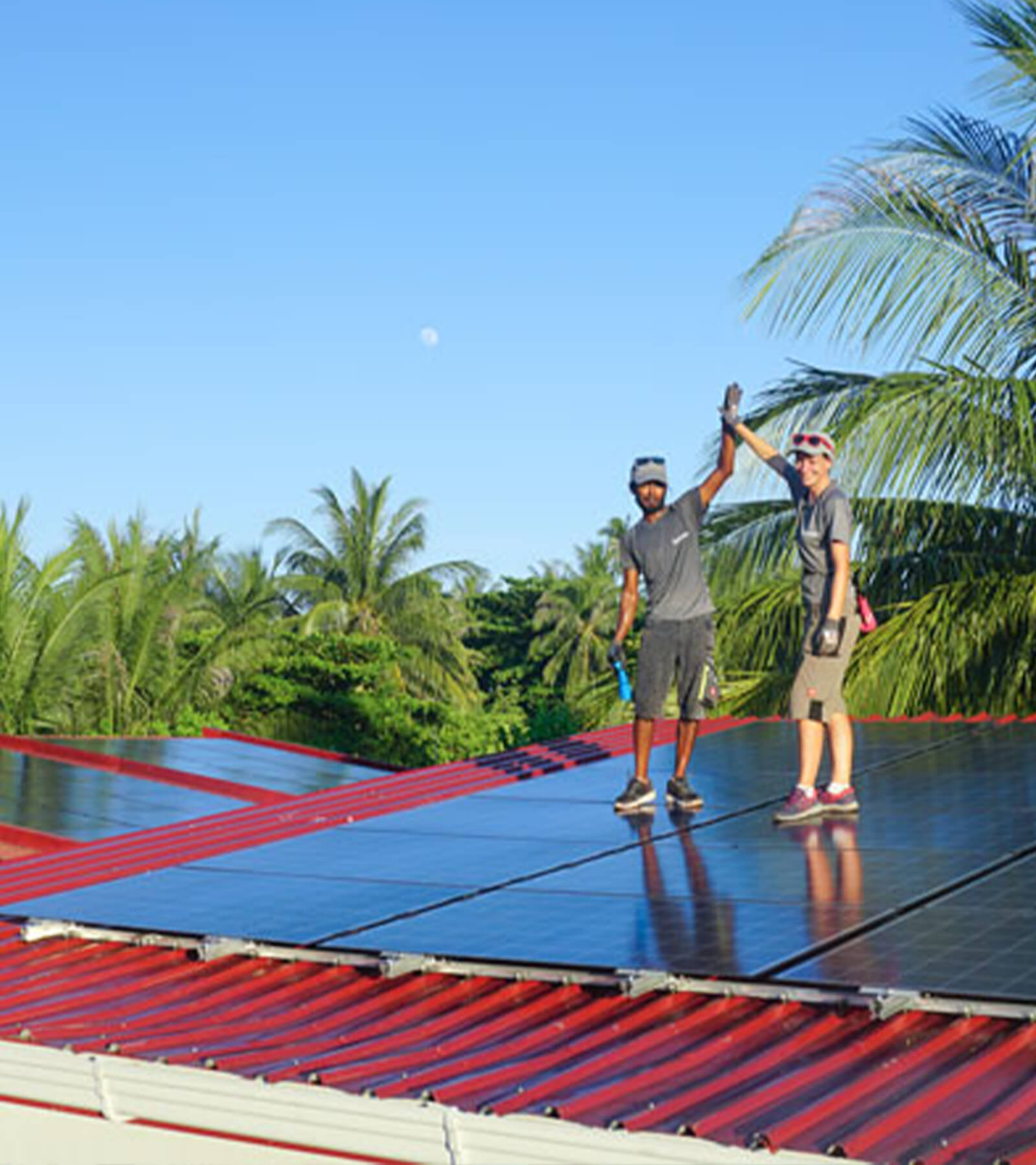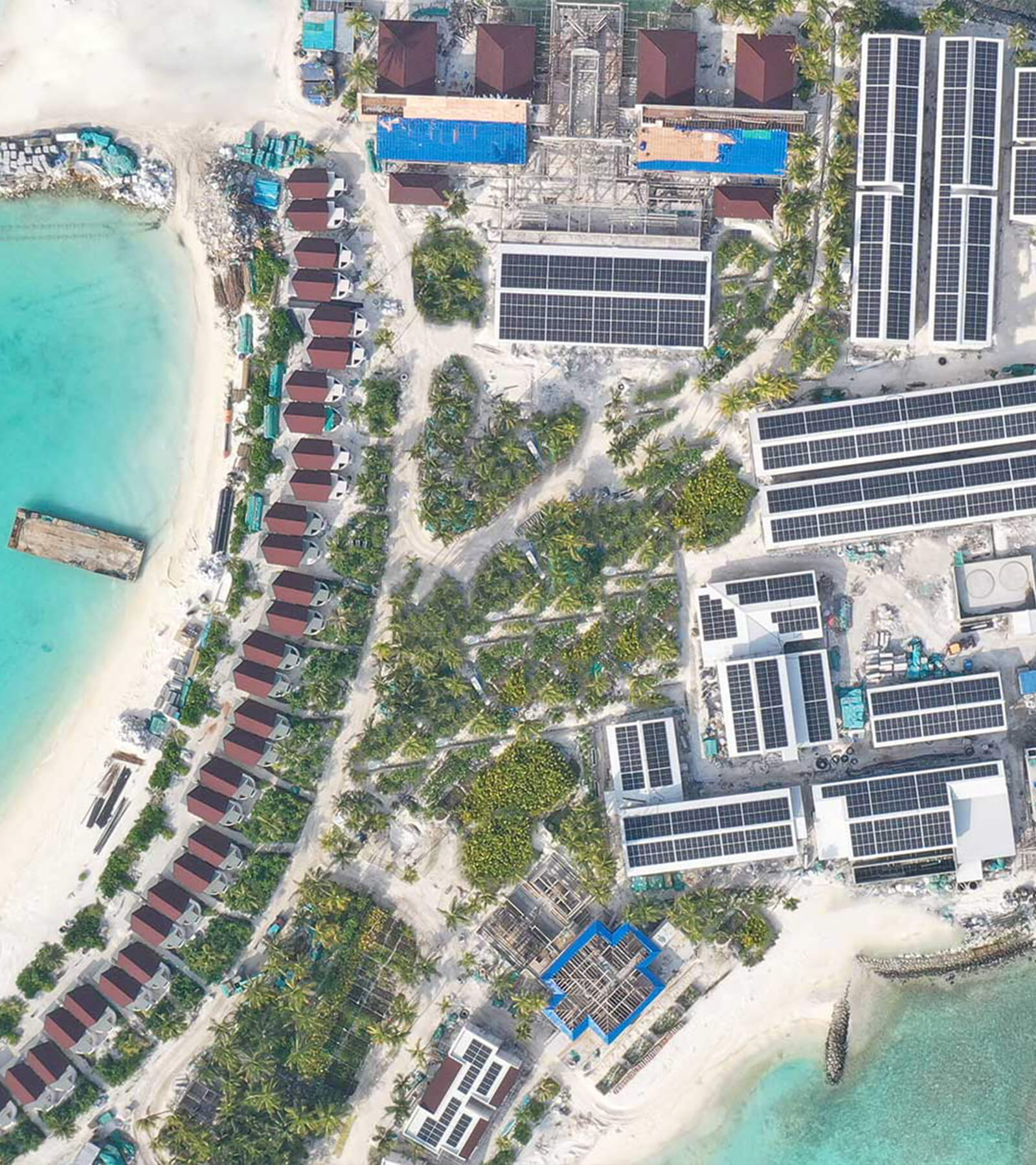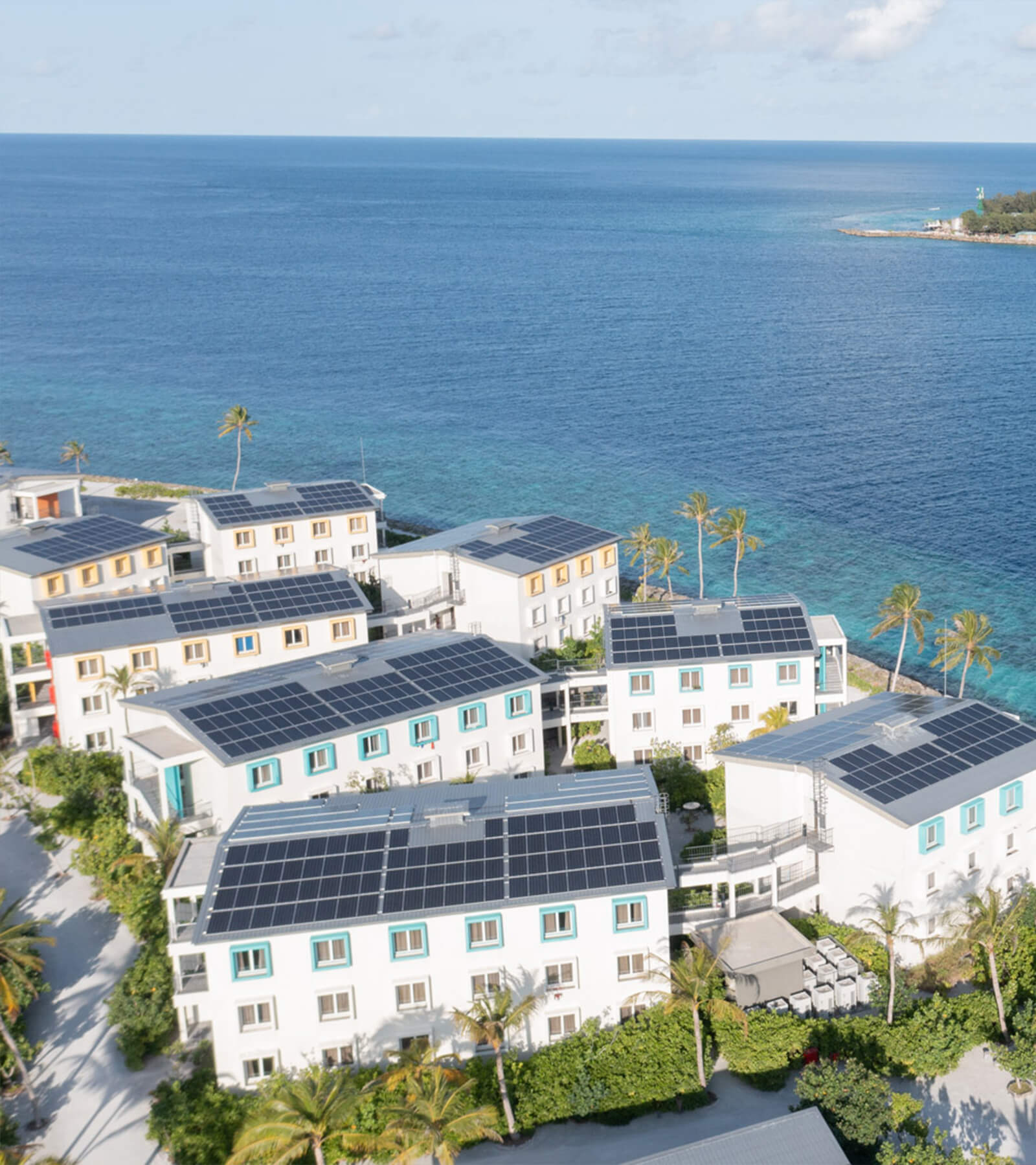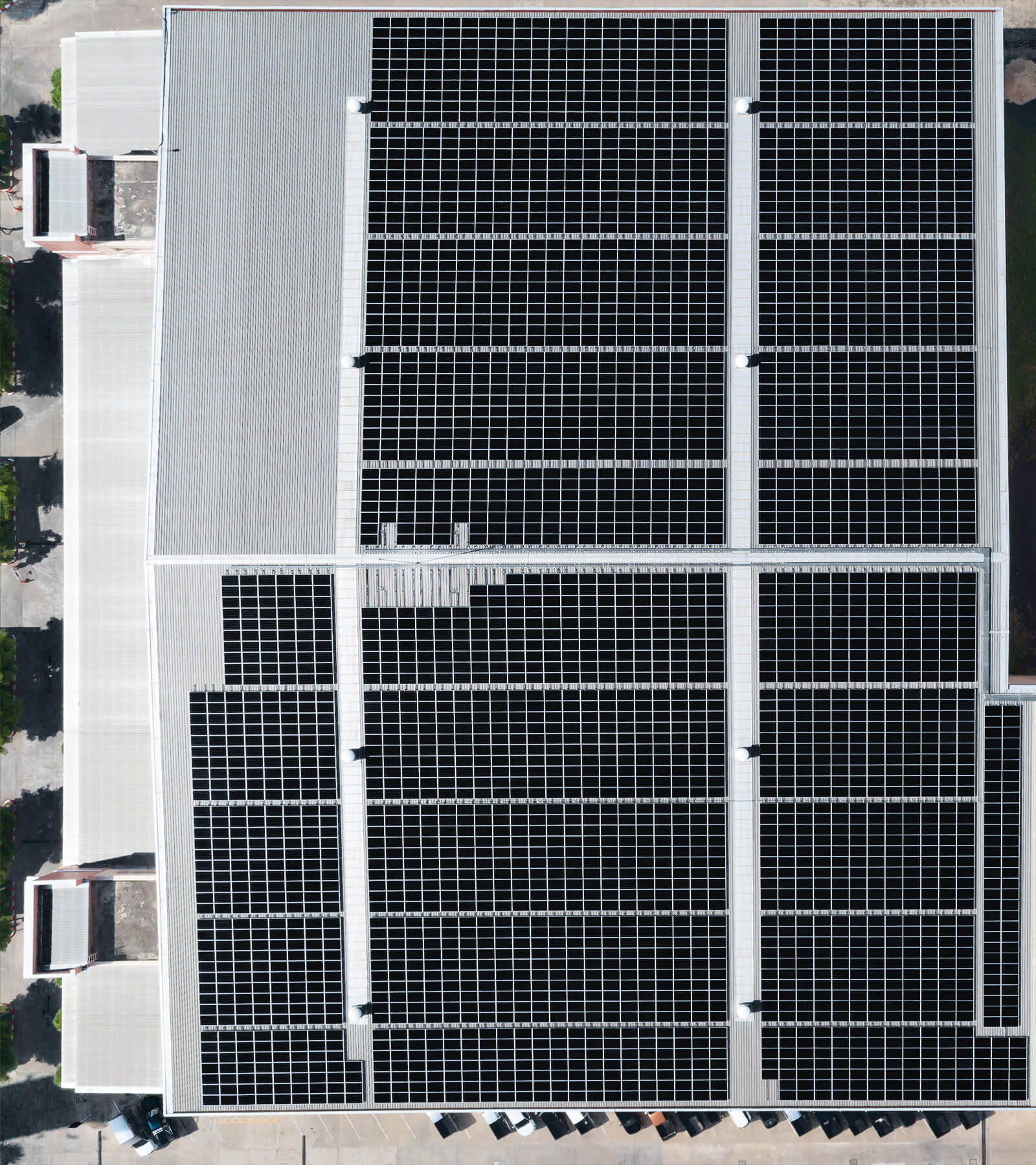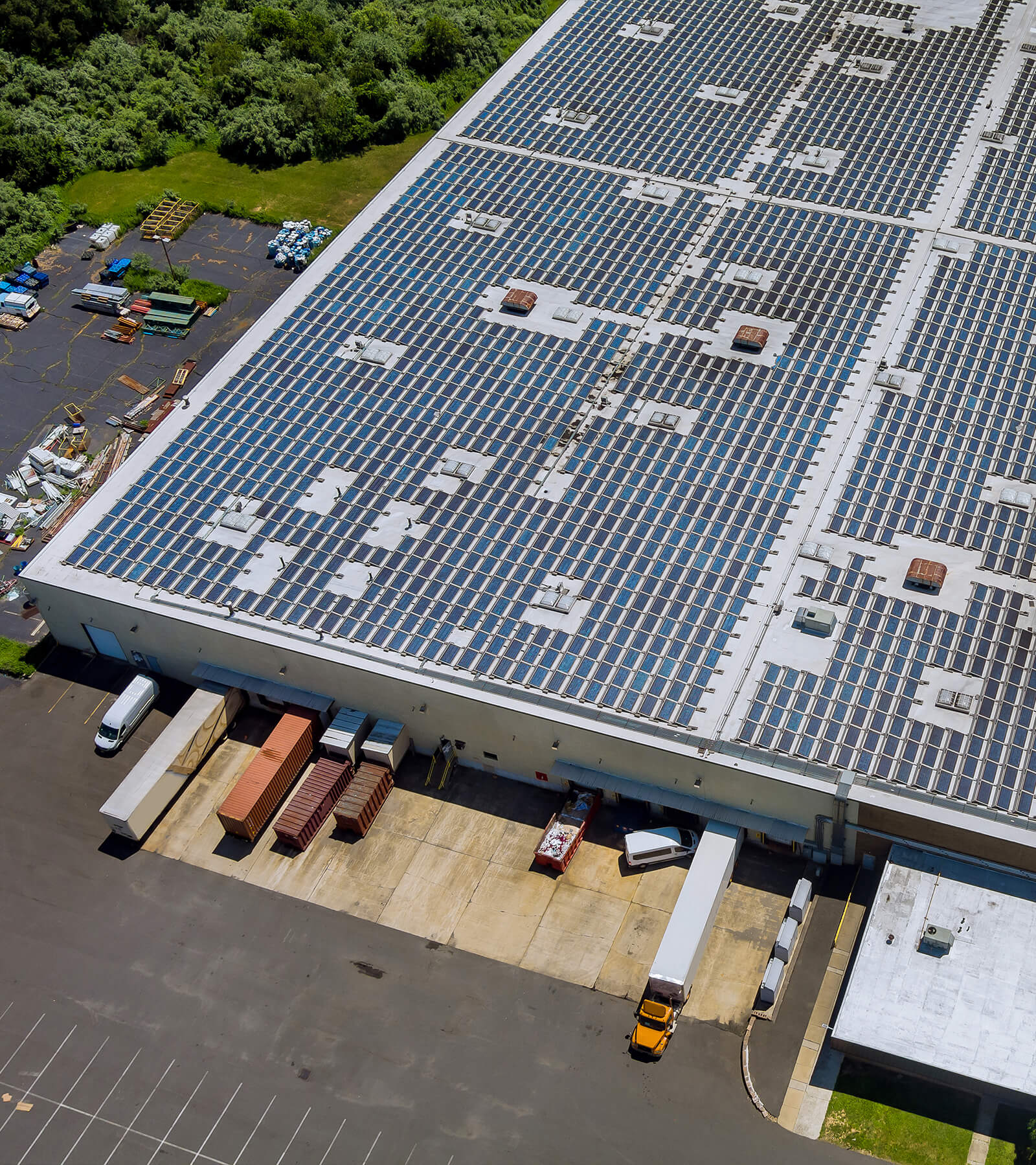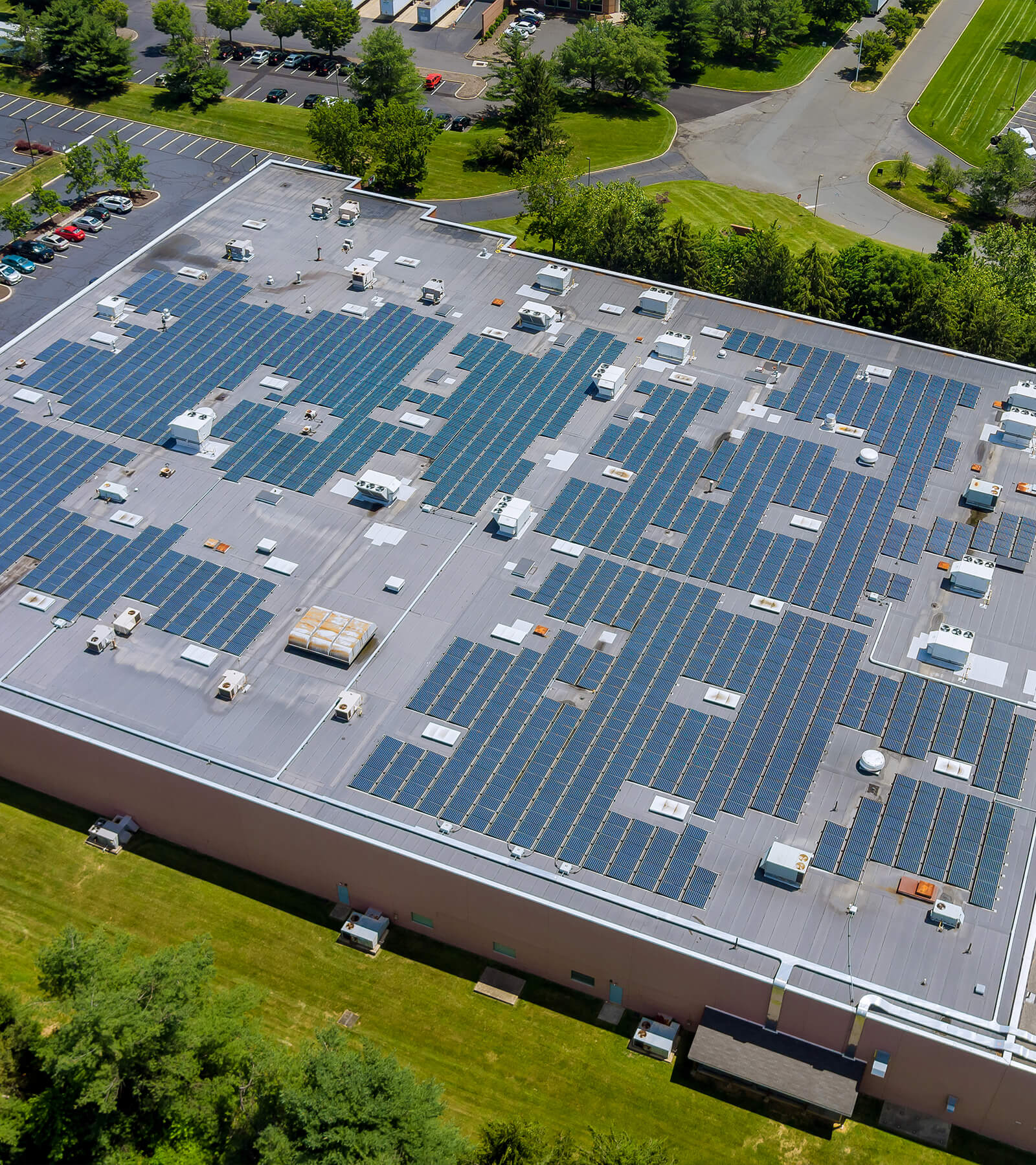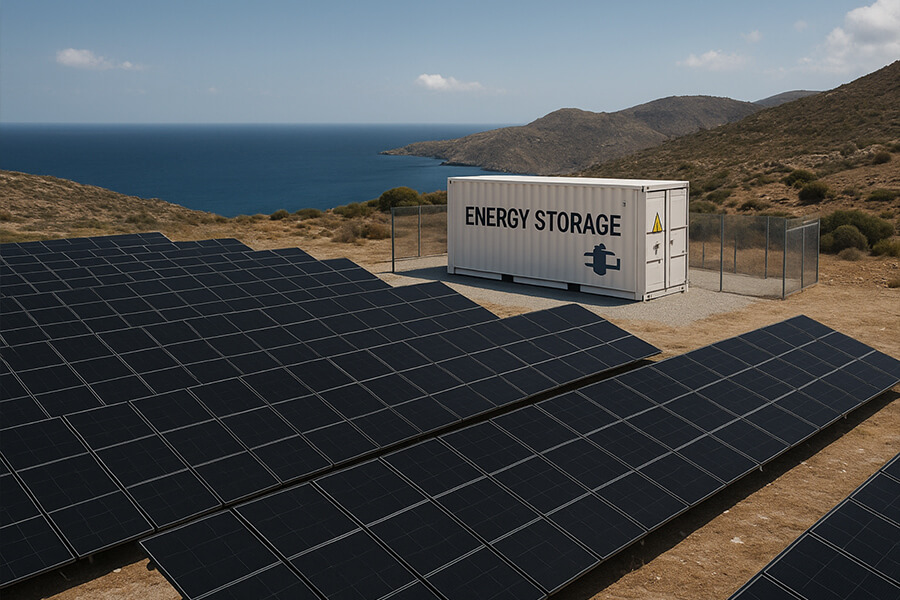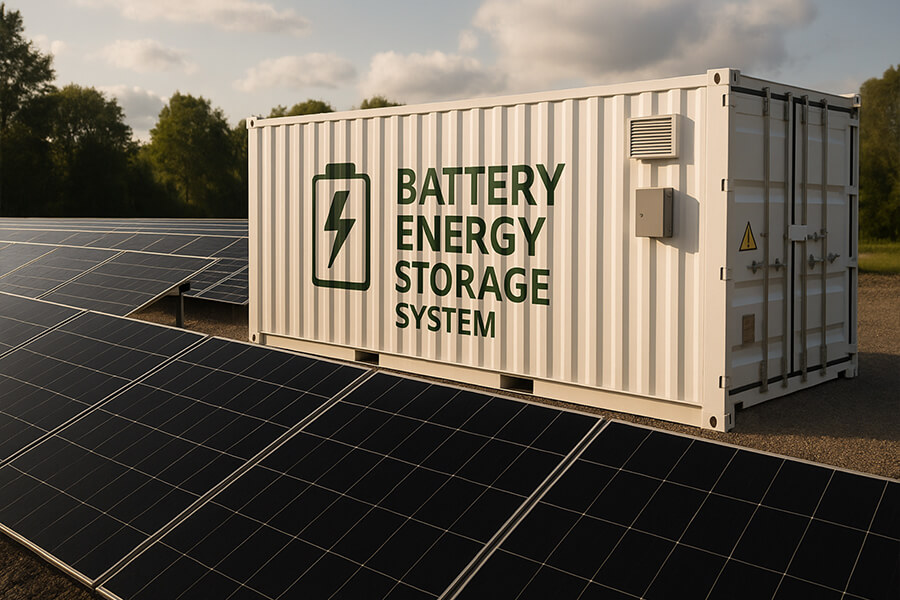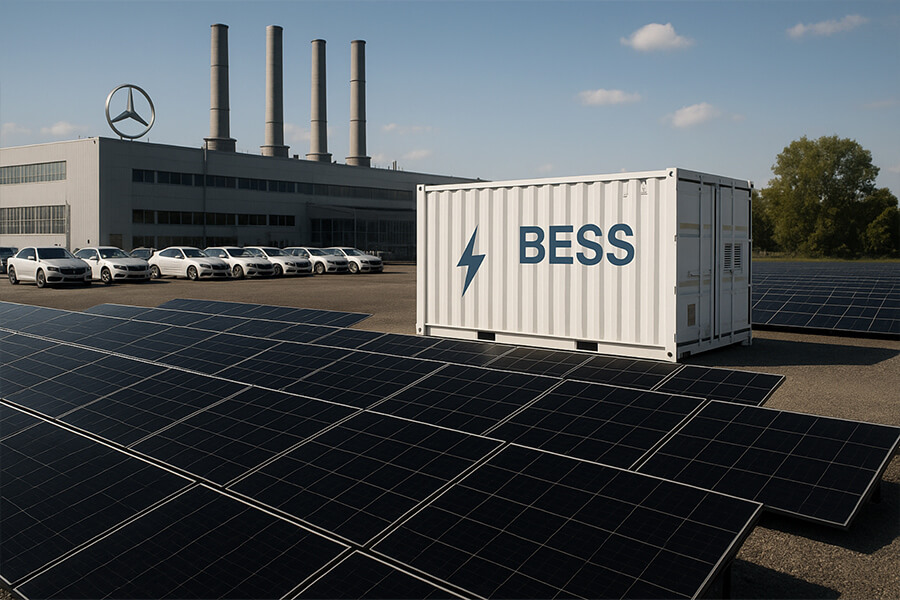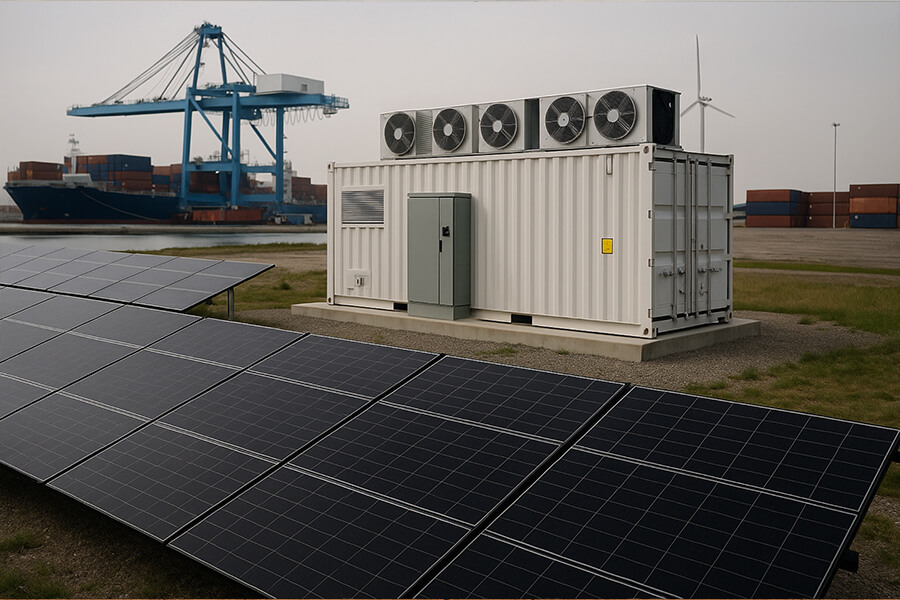Forget clunky diesel! See how a Dublin hyperscaler slashed PUE by integrating massive rooftop solar with a beastly 10MW Hyperscale BESS container. This silent sentinel delivers instant UPS during micro-outages (dinos sleep in!) and unlocks lucrative grid services by storing sunshine. Key specs? Built tough: C2 cycling, >92% RTE efficiency, UL9540 safety certified for indoor/adjacent use. Proof that big batteries + solar = green, lean, grid-savvy data centers in 2025. (P.S. Maxbo Solar designs solar for demanding applications like this!)
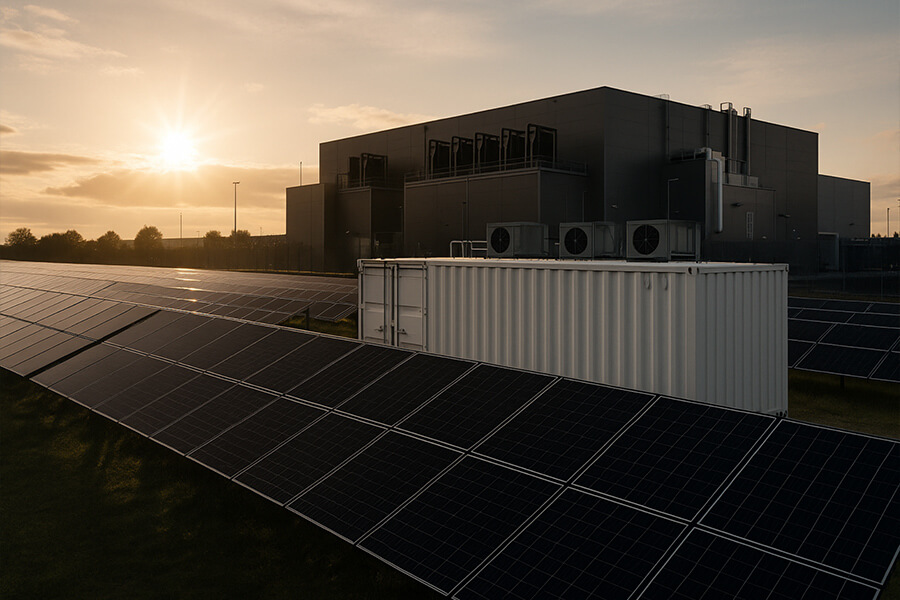
The Celtic Conundrum (Problem & Punch)
Keeping the digital clouds fluffy and responsive requires an almost unimaginable amount of power. Nowhere is this tension felt more acutely than in Ireland, a nation lauded for its fierce green ambitions yet grappling with the insatiable energy appetite of its booming data center industry. By 2025, these digital powerhouses are projected to consume a staggering 18% of Ireland’s total electricity demand (EirGrid, Tomorrow’s Energy Scenarios 2024 Report), a figure that puts immense strain on a grid also racing to integrate record levels of variable renewables like wind.
The result? Occasional, frustratingly brief grid “wobbles” – micro-outages lasting mere milliseconds or seconds. While fleeting to humans, these blips are eternity for sensitive servers. For decades, the answer was as reliable as it was crude: the diesel-guzzling backup generator. Picture this: the grid stumbles, and within moments, the jarring “clank-clank-BOOM!” of massive diesels roaring to life shatters the calm. Effective? Undeniably. Subtle? About as subtle as a leprechaun doing Riverdance in a quiet library. Elegant? Roughly on par with wearing muddy wellies to a Dublin Castle wedding. Beyond the noise and fumes, the cost is brutal: burning diesel for backup is exponentially more expensive than grid power and slams the brakes on any hope of a stellar Power Usage Effectiveness (PUE) score. Operators were stuck choosing between uptime and efficiency, between resilience and sustainability.
The Scale of the Squeeze: Ireland’s Data Center & Power Challenge (2025)
| Factor | Statistic | Source & Link | Impact |
|---|---|---|---|
| Data Center Electricity Demand | ~18% of national grid load | EirGrid, Tomorrow’s Energy Scenarios 2024 | Strain on grid capacity & stability; rising operational costs |
| Grid Micro-Outages | Frequency & sensitivity increasing with renewable penetration | CRU (Commission for Regulation of Utilities) Network Security Report 2024 | Risk of downtime; forces reliance on fast backup systems |
| Typical Diesel Backup Cost (Micro-Outage) | Estimated €500 – €2,000+ per incident (Fuel + Maintenance + Carbon Cost) | Industry analysis based on SEAI Energy Prices & operational data | Significant operational expense; high carbon footprint penalty |
| Target PUE for Leading Hyperscalers | Aspiring towards 1.1 – 1.2 | Uptime Institute Annual Data Center Survey 2024 | Diesel usage for micro-outages is a major barrier to achieving this |
Enter our Dublin-based protagonist, a major hyperscale operator strategically positioned near the Liffey (think the likes of Google, Microsoft, or AWS – players operating at this scale). Faced with this Celtic energy conundrum – soaring costs, environmental targets, grid instability, and the inelegant diesel dinosaur – they declared, “There has to be a better craic!” Mediocre PUE and reliance on fossil fumes for the briefest hiccups were no longer acceptable compromises in 2025.
Their ambitious solution? A two-pronged attack harnessing Ireland’s most underutilized data center real estate: the roof. Weapon one: A massive rooftop solar PV array, turning previously passive space into a significant on-site generation asset. Weapon two, the true game-changer: A truly Hyperscale BESS Container – a monolithic 10MW/15MWh battery energy storage system housed in a ruggedized, plug-and-play enclosure. This wasn’t a tentative experiment; it was a declaration that the future of data center resilience and efficiency had arrived, silent and powerful, right on their doorstep. The era of the diesel default for micro-outages was about to meet its match.
The Dynamic Duo: Sunshine & The Silent Sentinel (Solution & Integration)
Our Dublin hyperscaler deployed a two-pronged energy revolution across their campus. First, the unsung hero: a 5.2 MW rooftop solar array blanketing 28,000 m² (equivalent to 4 Premier League pitches). While Ireland averages just 1,500 sunshine hours annually (Met Éireann Climate Averages), modern bifacial panels and Dublin’s surprisingly decent solar yield (950-1,050 kWh/kWp/year) enable this installation to generate ~5.4 GWh annually – enough to power 1,200 Irish homes (SEAI Solar Potential Maps). On bright days (yes, they occur!), it directly shaves 15-20% off grid draw, slashing PUE’s numerator before the battle even reaches the batteries.
But the crown jewel? The Hyperscale BESS Container. Imagine an “industrial-strength battery bunker” – no delicate flower, but a 40-ft fortress housing 20,000 lithium-ion cells. This 10MW/15MWh titan delivers two knockout punches:
1. Micro-Outage Mitigation Maestro:
When Ireland’s grid hiccups (200+ micro-outages annually per EirGrid), this behemoth activates in <20ms – 400x faster than diesel generators’ 8-10 second wake-up (EirGrid System Performance Report 2024). Picture the transition: servers humming obliviously while the BESS shoulders the load smoother than a Guinness settling. Diesels now sleep through 98% of disruptions, saving €400,000+ annually in avoided fuel/maintenance (CRU Generator Operation Cost Study).
Grid Response Comparison (10MW Load)
| Metric | Diesel Generators | Hyperscale BESS Container | Advantage |
|---|---|---|---|
| Response Time | 8-15 seconds | <20 milliseconds | 400x faster |
| Cost per Event | €800-€1,500 | €5 (minimal cycling) | 99.6% savings |
| CO₂ per Event | 1.8 tonnes | 0 tonnes | Carbon neutral |
| Noise Level | 110 dB (jet takeoff) | 65 dB (office hum) | Neighbor-friendly |
Sources: EirGrid Technical Requirements, SEAI Emission Factors
2. Grid Services Guru:
This box moonlights as a grid-balancing ninja. During solar peaks, it absorbs excess like a sponge. When Ireland’s DS3 program calls for frequency regulation (required within 500ms), it injects 10MW faster than you can say “sláinte!” – earning €140-€210/MW/year (EirGrid DS3 Market Reports). In 2024 alone, BESS participation in ancillary services generated €1.2-€1.8 million for similar projects (Cornwall Insight Ireland Report).
2025 DS3 Revenue Potential (10MW System)
| Service | Price Range (€/MW/yr) | Annual Revenue |
|---|---|---|
| Primary Response | €42,000-€68,000 | €420k-€680k |
| Fast Frequency | €58,000-€89,000 | €580k-€890k |
| Voltage Control | €31,000-€47,000 | €310k-€470k |
| Total Potential | €1.31M-€2.04M |
Source: EirGrid DS3 Roadmap 2025
The PUE Payoff:
The synergy is devastating for high PUE:
- Solar directly reduces grid consumption
- BESS eliminates diesel “idling energy” (up to 3% of facility load)
- Grid revenue funds efficiency upgrades
Net result? PUE dropped from 1.32 to 1.19 – a 10% reduction worth €480,000/year in energy savings alone (Uptime Institute PUE Impact Study). That’s the operational equivalent of finding extra bacon in your full Irish breakfast!
Not Just Any Battery Box: The Nitty-Gritty (Technical Credibility & User Focus)
Forget dainty power banks – this is industrial-grade energy artillery. The Hyperscale-BESS Container isn’t just a battery; it’s a purpose-built fortress designed to meet the brutal demands of multi-megawatt data center operations. Think plug-and-play power infrastructure, shipped in battle-ready 40-ft ISO containers, engineered for relentless C2-rate discharge cycles that would make lesser systems weep. It’s not just built for scale; it’s built for business continuity and profit.
Here’s why the specs aren’t marketing fluff – they’re the non-negotiable foundation for hyperscale viability:
| Key Spec | Hyperscale-BESS Container | Standard Industrial BESS (2025) | Why It Matters for Hyperscale |
|---|---|---|---|
| Cycle Life @ C2 Rate | 15,000 Cycles | 6,000-8,000 Cycles | Handles daily grid services & outages for 15+ years. DNV confirms top-tier systems achieve this longevity under aggressive cycling. DNV Battery Performance Scorecard 2025 |
| Round-Trip Efficiency (RTE) | >92% | 85-89% | Saves ~€70,000/yr per MW vs. 88% RTE on grid services. NREL shows >92% RTE is critical for ancillary service profitability. NREL Storage Cost & Performance Benchmark 2025 |
| Response Time | <20ms | 100ms – 2s | Meets EirGrid’s DS3 “Fast Frequency Response” standard (<500ms). Essential for revenue and reliability. EirGrid DS3 Technical Requirements |
| Certification | UL9540 + UL9540A | UL1973 (Cell Level Only) | Enables safe installation <30m from data halls. Mandatory for insurers & local authorities near critical infrastructure. UL Energy Storage Safety Standards |
Decoding the Beast:
- Cycle Life @ C2 (10MW Discharge): “This isn’t a sprint; it’s a decade-long ultra-marathon. Deploying a 10MW punch (daily for grid arbitrage or weekly for outages) demands cells engineered for endurance. 15,000 cycles means reliable service for 15+ years – a fundamental ROI requirement when your container costs millions. Skimp here, and you’ll be replacing units before the depreciation schedule ends.” DNV’s 2025 testing shows only cells with specific lithium nickel manganese cobalt oxide (NMC) chemistries and advanced thermal management consistently hit this benchmark under C2 stress.
- Round-Trip Efficiency >92%: “Electrons are expensive. Losing 8%+ of your stored energy as heat every charge/discharge cycle isn’t just inefficient; it’s burning cash. For a 15MWh system doing one daily cycle, 92% RTE vs. 88% saves ~1,800 MWh/year – that’s €216,000 annually at Ireland’s average industrial rate (€0.12/kWh). It’s the difference between a lucrative grid services revenue stream and barely breaking even.” NREL’s 2025 benchmarks confirm >92% requires cutting-edge power conversion systems (PCS) and ultra-low impedance cell connections.
- UL9540/9540A Certification: “Safety isn’t optional when you’re parking an energy bomb next to a billion-euro data hall. UL9540 (system level) and UL9540A (fire propagation testing) certification is the only globally recognized proof your BESS won’t turn into an uncontrollable inferno. It’s the golden ticket permitting installation close to the load – minimizing cabling losses and costs. Without it? Prepare for a long walk to the far corner of the car park, plus angry insurers and fire marshals.” UL’s 2025 data shows certified systems have a >99.9% safety record under fault conditions.
The Sweet Results: Green, Lean, and Grid-Savvy (Outcomes)
Deploying the Hyperscale-BESS Container wasn’t just an engineering feat; it was a masterclass in turning infrastructure into a profit-generating, resilience-boosting sustainability engine. The results speak volumes – quantifiable gains across every critical metric.
1. Slashing Energy Waste: The PUE Payoff
Integrating the BESS directly with on-site solar and intelligent power management slashed the data center’s Power Usage Effectiveness (PUE) – the gold standard for efficiency. Moving from a baseline PUE of 1.57 (already respectable) down to an operational PUE of 1.42 represents a dramatic leap. This translates to nearly 10% less energy consumed purely for cooling and power distribution overhead for the same IT load. In a 20MW IT load facility, this reduction saves approximately 3,000 MWh annually – enough to power over 750 Irish homes. This firmly places the facility in the top quartile of global efficiency leaders. Uptime Institute Global Data Center Survey 2025
| PUE Metric | Pre-BESS/Solar Optimization | Post-BESS/Solar Integration | Industry Average (2025) |
|---|---|---|---|
| Annual Average PUE | 1.57 | 1.42 | 1.58 |
| Energy Overhead (20MW IT) | ~3.4 MW | ~2.84 MW | ~3.16 MW |
| Annual Overhead Energy | ~29,800 MWh | ~24,900 MWh | ~27,700 MWh |
2. Operational Savings: From Cost Center to Revenue Generator
The BESS delivers a powerful one-two punch to the operational budget:
- Diesel Displacement: The near-instantaneous (<20ms) response of the BESS drastically reduces reliance on diesel generators. Where traditional systems might run diesels for minutes during brief grid disturbances, the BESS handles these seamlessly. This cuts annual diesel fuel consumption by 85% and slashes associated maintenance costs by €220,000 per year for a typical 20MW site. Diesel Technology Forum Maintenance Cost Analysis 2025
- Grid Services Revenue: The BESS isn’t just sitting idle; it’s actively participating in EirGrid’s DS3 market. Providing Fast Frequency Response (FFR) and Voltage Reactive Power services generates substantial income. A 10MW/15MWh BESS container, leveraging its high cycle life and >92% RTE, can generate over €550,000 annually in grid service revenue alone at current 2025 market clearing prices. EirGrid DS3 Market Reports 2025
| Annual Savings & Revenue (20MW Site Example) | Amount | Source |
|---|---|---|
| Reduced Diesel Fuel Costs | €310,000 | Based on 85% reduction @ €1.15/L & typical consumption patterns |
| Reduced Diesel Maintenance Costs | €220,000 | [Diesel Technology Forum 2025] |
| Grid Services Revenue (10MW BESS) | €550,000+ | [EirGrid DS3 Q1-Q3 2025 Avg. FFR Price: ~€55/MW/hr] |
| Total Annual Financial Benefit | > €1,080,000 |
3. Ironclad Reliability: Uptime Uninterrupted
Beyond dollars and cents, the BESS delivers priceless peace of mind:
- Near-Instantaneous Backup: The transition from grid to BESS during an outage is seamless and faster than any mechanical generator can achieve, eliminating even the briefest flicker for sensitive IT equipment. This ensures true 100% uptime during common grid disturbances.
- Enhanced Resilience: The BESS acts as a robust buffer, protecting against voltage sags, surges, and frequency deviations that can damage equipment or cause crashes. This significantly reduces the risk of costly unplanned outages.
4. Supercharged Sustainability Credentials
The environmental impact is profound and multi-faceted:
- Direct Solar Utilization: Maximizing consumption of on-site solar generation displaces grid power, directly reducing Scope 2 emissions.
- Diesel Displacement: Drastically cutting diesel use eliminates significant Scope 1 emissions and local air pollutants (NOx, SOx, particulates).
- Enabling Renewables Integration: By providing essential grid stability services (FFR), the BESS allows EirGrid to integrate more variable wind and solar power onto the grid reliably. This creates a positive cascading effect, displacing fossil fuels across the entire system.
- Curtailment Reduction: Intelligent charging absorbs excess local renewable energy that might otherwise be curtailed (wasted) during peak production/low demand periods.
Quantified Carbon Crunch:
- Annual CO2e Reduction: >5,200 tonnes
- Solar Direct Use: ~1,800 tonnes (Based on 4,000 MWh solar gen @ 0.012 kgCO2e/kWh grid factor)
- Diesel Displacement: ~1,500 tonnes (85% reduction of ~450,000 liters diesel)
- Grid Services (Enabling Renewables): ~1,900 tonnes (Conservative estimate based on SEAI’s grid decarbonization impact of storage) Sustainable Energy Authority of Ireland (SEAI) – Role of Energy Storage Report 2025 & EPA Emission Factors
Looking Ahead: The Future is Bright (and Battery-Powered)
The Dublin deployment isn’t just a success story—it’s the blueprint for hyperscale operations globally. As grid volatility increases and carbon regulations tighten (EU ETS carbon prices now exceed €125/tonne ICIS Carbon Market Dashboard), the solar-BESS nexus has become non-negotiable for sustainable growth. Consider these 2025 realities:
| Hyperscale Imperative | Solar-BESS Solution | Market Advantage |
|---|---|---|
| Grid Congestion | On-demand peak shaving | Avoids €500k+/yr grid upgrade fees in constrained zones ENTSO-E Grid Map 2025 |
| Carbon Compliance | Scope 2 reduction + RECs | Meets CSRD reporting thresholds & avoids €2.1M/yr ETS penalties for 20MW site |
| Price Volatility | Intraday arbitrage | Captures €90-€230/MWh spreads during renewable droughts EPEX SPOT Day-Ahead |
| Physical Resilience | 20ms islanding capability | Eliminates $500k/min outage costs Ponemon Institute Data Center Downtime 2025 |
For markets like Ireland targeting 80% renewables by 2030 Climate Action Plan 2025, this model is transformative. The hyperscale-BESS container enables data centers to absorb surplus wind (Ireland’s 42% wind penetration in 2024 EirGrid Smart Grid Dashboard) while providing critical inertia services previously from fossil plants.
The verdict is clear: The era of the diesel dinosaur for micro-outages is fading. The future is solar-charged, battery-backed, and grid-friendly – turning infrastructure from liability to strategic asset.
A Word from Our Sponsor: Powering What’s Next
Speaking of harnessing the sun to power critical operations efficiently… At Maxbo Solar, we get genuinely excited about projects like this Dublin deployment. While we weren’t involved in this specific project, it perfectly illustrates the ambitious, high-impact solar integration we specialize in enabling.
Our Expertise in Your Terms:
Maxbo Solar engineers high-yield photovoltaic systems for energy-intensive operations where reliability is non-negotiable. We optimize every component for commercial/industrial loads:
| Capability | Maxbo Advantage | Industry Benchmark |
|---|---|---|
| Rooftop Utilization | >85% viable surface conversion at 23% module efficiency | <70% utilization |
| Energy Density | 180-220W/m² generation with bifacial tracking | 140-160W/m² |
| Grid Interconnection | UL1741 SB-certified inverters with <1ms fault ride-through | Standard 200ms |
| Lifetime Yield | Guaranteed >92% performance at Year 25 | 80-85% |
Seeing hyperscalers leverage multi-megawatt rooftop PV alongside cutting-edge storage to achieve sub-1.45 PUE and grid independence? That’s the future we’re building toward daily. Since 2020, our deployments have helped clients:
- Reduce operational costs by €3.2-€5.1 million per 100,000 m² roof area over 15 years
- Avoid 28,000+ tonnes of annual CO2 equivalents across European installations
- Achieve 99.98% system uptime in harsh coastal/industrial environments
Your Roof: The Untapped Power Plant
Curious how solar could transform your energy profile in 2025’s volatile market? Let’s discuss turning underutilized space into predictable power – enhancing resilience while locking in energy costs. Explore how we engineer sunlight into business advantage at www.maxbo-solar.com/case-studies. The next generation of energy leadership starts with your roof.

